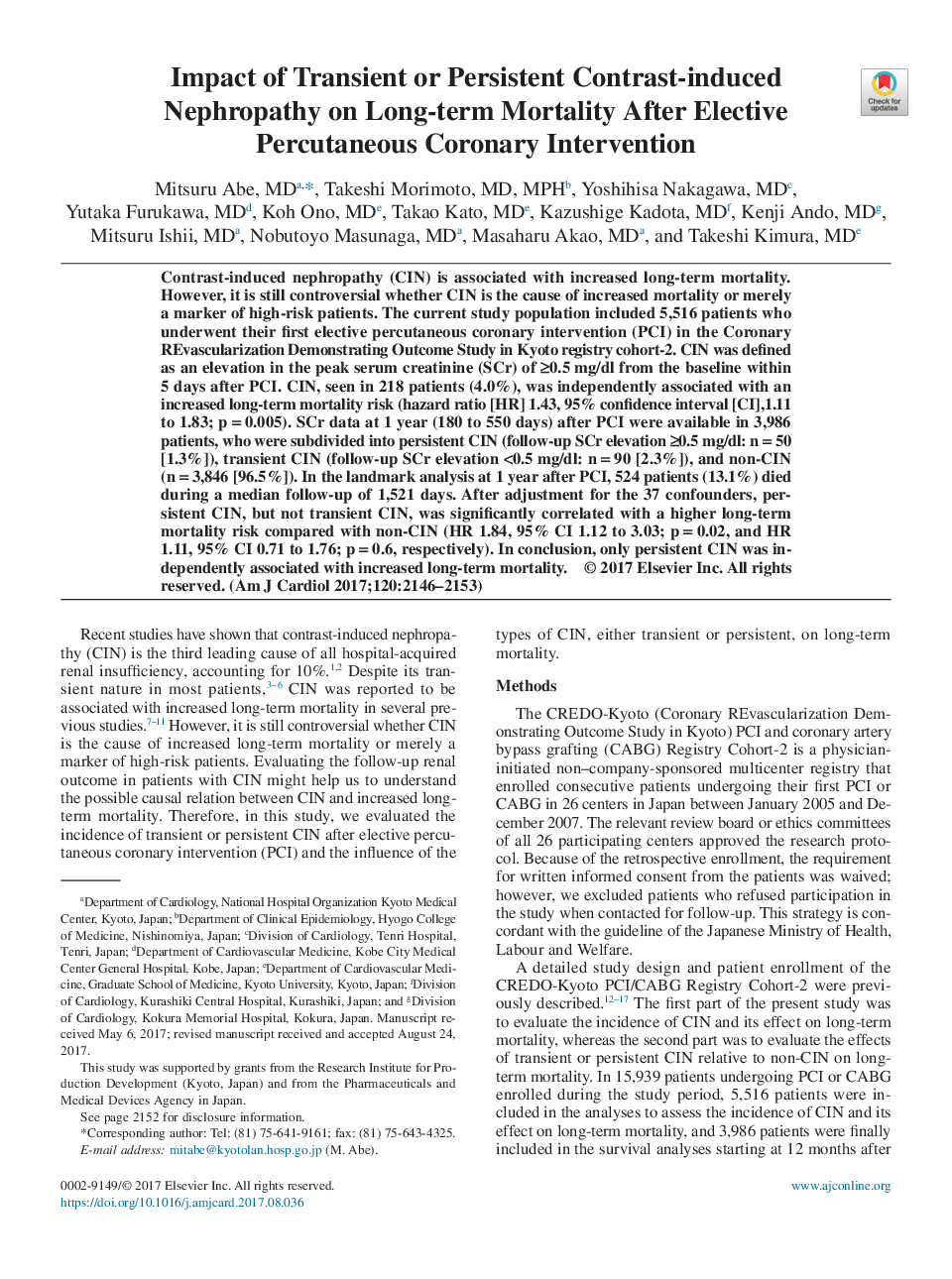| Article ID | Journal | Published Year | Pages | File Type |
|---|---|---|---|---|
| 8651612 | The American Journal of Cardiology | 2017 | 8 Pages |
Abstract
Contrast-induced nephropathy (CIN) is associated with increased long-term mortality. However, it is still controversial whether CIN is the cause of increased mortality or merely a marker of high-risk patients. The current study population included 5,516 patients who underwent their first elective percutaneous coronary intervention (PCI) in the Coronary REvascularization Demonstrating Outcome Study in Kyoto registry cohort-2. CIN was defined as an elevation in the peak serum creatinine (SCr) of â¥0.5âmg/dl from the baseline within 5 days after PCI. CIN, seen in 218 patients (4.0%), was independently associated with an increased long-term mortality risk (hazard ratio [HR] 1.43, 95% confidence interval [CI],1.11 to 1.83; pâ=â0.005). SCr data at 1 year (180 to 550 days) after PCI were available in 3,986 patients, who were subdivided into persistent CIN (follow-up SCr elevation â¥0.5âmg/dl: nâ=â50 [1.3%]), transient CIN (follow-up SCr elevation <0.5âmg/dl: nâ=â90 [2.3%]), and non-CIN (nâ=â3,846 [96.5%]). In the landmark analysis at 1 year after PCI, 524 patients (13.1%) died during a median follow-up of 1,521 days. After adjustment for the 37 confounders, persistent CIN, but not transient CIN, was significantly correlated with a higher long-term mortality risk compared with non-CIN (HR 1.84, 95% CI 1.12 to 3.03; pâ=â0.02, and HR 1.11, 95% CI 0.71 to 1.76; pâ=â0.6, respectively). In conclusion, only persistent CIN was independently associated with increased long-term mortality.
Related Topics
Health Sciences
Medicine and Dentistry
Cardiology and Cardiovascular Medicine
Authors
Mitsuru MD, Takeshi MD, MPH, Yoshihisa MD, Yutaka MD, Koh MD, Takao MD, Kazushige MD, Kenji MD, Mitsuru MD, Nobutoyo MD, Masaharu MD, Takeshi MD,
